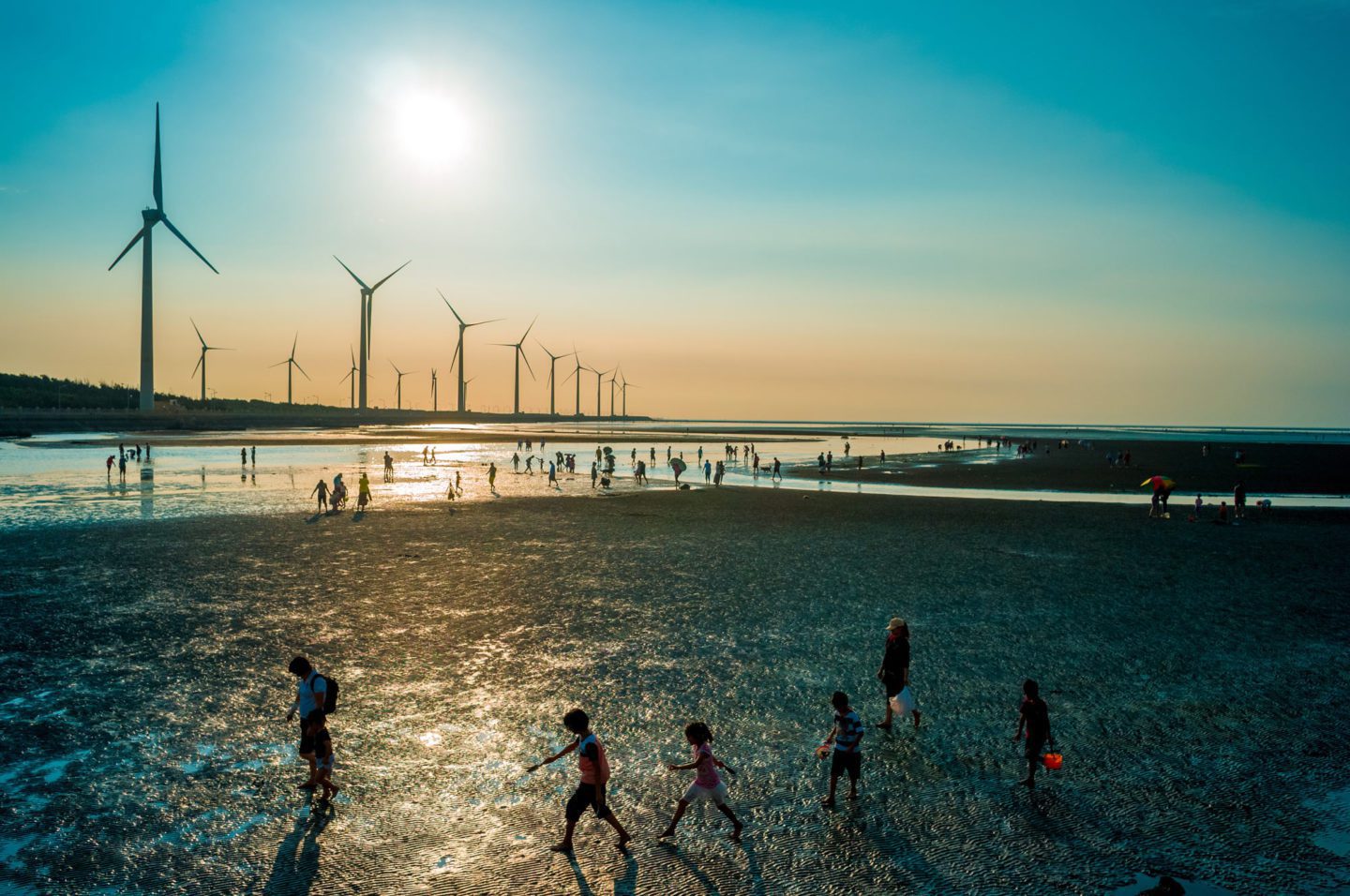
Yes, in the near-term, demand for residential solar will go down as households pare back on spending and perhaps people won’t rush out to buy that electric car. After all, petrol prices have been coming down a lot, even with the OPEC deal. It might also be harder to source tax equity financing for renewable projects (or any financing for that matter). Furthermore, national lockdowns mean that workers, whether for assembling parts or onsite installations, are not always available, causing supply chain issues as well as project delays. As if that were not enough, a decline in power usage is hitting prices and ultimately the revenues of some utility companies that support ambitious green expansion plans. A sensible political push to protect vulnerable citizens from immediate electricity and rent bills in some countries compounds the pressure.
Unfortunately the climate crisis is here to stay, however, so do not be fooled. While emissions have temporarily gone down, remember that CO2 remains in the atmosphere for centuries on average and we had another record year of emissions in 2019. As soon as Covid-19 moderates and our economies start back up, emissions will rise again. So much for reducing our footprint. Indeed, we already see increased evidence that virus spread and death rates are peaking in several countries outside Asia, prompting some, such as Austria and Denmark, to begin to re-open schools and small shops. Where they lead, others will follow. Although the process will be gradual, a broader re-opening is increasingly likely to start in early to mid-May across a range of countries.
If you are in the government, you might start to think about supporting industries that will more reliably create jobs and grow tax receipts (renewables) instead of ones that are shrinking (fossil fuels).
Edward Lees, BNP Paribas Asset Management
Storms, fires and floods will not stop at all, of course. A nasty fire in the Ukraine in April required more than four hundred firefighters, planes and helicopters to control it and came within two kilometres of Chernobyl’s radioactive waste depots. Meanwhile, over Easter, the USA had its deadliest tornado outbreak in six years, as forty tornados killed thirty-two people across the South. Finally, remember 2019 when press coverage was focused on Extinction Rebellion, ESG metrics, and shifting endowment investment policies? My guess is that those headlines will come back, given that the Millennials and Gen Z youth, who help drive these concerns, have not gone away. On the contrary, they continue to grow older, steadily gathering more power and money to add to their convictions.
We have also all been reminded of how fickle oil prices are. If you are in the government, you might start to think about supporting industries that will more reliably create jobs and grow tax receipts (renewables) instead of ones that are shrinking (fossil fuels). If you manage a big oil company, you might start to ask if you should still allocate those billions of capex dollars to projects with an uncertain future. Surely most return estimates must now come down dramatically. Instead, either return the money to shareholders, or if you want your business to stick around and grow, pivot into… you guessed it, renewables.
45%
UBS Evidence Lab projects a 45% compound annual growth rate in electric vehicle penetration through 2025
Meanwhile, we have been shown that a corporate culture of just-in-time inventory with its global supply chains is fragile. Resiliency has generally fallen by the wayside in favour of efficiency and speed. The idea of resiliency is particularly relevant when it comes to electric power. While utilities have much less demand to meet at present, Covid-19 can still impact utility and grid operations, and so too could a badly timed storm. Imagine if a hospital’s power went out now with their extra electricity demand from hundreds of ventilators. An extension of this is that microgrids and distributed generation with storage, whether from fuel cells or solar, are even more important now than when California’s forest fires sparked an upsurge of activity in these areas. More generally, the lack of resilience that global systems have exhibited in the face of Covid-19, with the associated loss of life, contains a warning for us in respect of climate change, which also presents a threat that is hard to estimate and contain. The key take-away is do not wait to act until after the problem entrenches itself.
What else might we see? There is a long list of possibilities: consolidation as companies with stronger balance sheets take advantage of the downturn, renewed interest in automation and robotics, even more ecommerce and digital leisure, remote learning and working from home as a new normal. One thing I do know for certain though is that the energy transition question will come back into the thinking of politicians, the public, and investors. Let’s see if elements of a green new deal make it into stimulus package #4 in the US, or perhaps even come along with a Democratic president by year-end. Even without those things, however, this area will eventually do what it did before Covid-19, which was to lead the market. This is not just because of lower interest rates and fiscal stimulus, but also because of what happens when you have strong-growth industries that help to solve an existential problem and make money while doing so (if they manage to leverage Moore’s Law, the economics keep getting better too.) Just to give you some quick examples, UBS Evidence Lab projects a 45% compound annual growth rate in electric vehicle penetration through 2025 and Bloomberg New Energy Finance predicts a roughly 18% compound annual growth rate in energy storage for the next 20 years. This is not the kind of potential growth you find every day.
Oh and about that electric car: amidst the Covid-19 outbreak the UK moved its deadline for banning internal combustion engines forward by five years.
Edward Lees, BNP Paribas Asset Management
Right now we are all getting a chance to get back into this opportunity at lower prices, even with the rally from lows we have recently seen. If you don’t do it, ESG funds, which are receiving inflows, will. According to Goldman Sachs, this year US ESG exchange traded funds received $6.7bn and European peers received $3.5bn from January through March 20th, outgrowing almost all other exchange traded fund styles, which largely saw outflows (the exception was dividends, although even that fell behind ESG towards the end of March). I guess I should not be surprised as ESG investors are in part value-led and arguably tend to have longer-term investment horizons, perhaps helping them to see through this crisis.
A closing thought. We have all been rudely awakened to the fragility of our global system. Things that either seem under control or are invisible now, can rise up and upend the way we currently assume we will be able to live tomorrow. This is true for both pandemics and climate change. During the past couple of months, we have also seen the power of a digital world that can share scientific work and, in places, the spirit of a world that comes together. This has already resulted in an amazing seventy vaccine candidates, several of which are already undergoing human trials and one, from Oxford University, that they say could be ready by this autumn. This can provide inspiration for what we can collectively do in the face of climate change. Oh and about that electric car: amidst the Covid-19 outbreak the UK moved its deadline for banning internal combustion engines forward by five years, so it could still be worth a look. It will also save you from touching potentially infected refuelling pumps at the petrol station!

Edward Lees, Senior Portfolio Manager, BNP Paribas Asset Management and Co-Manager, BNP Paribas Energy Transition Fund
- Explore Categories
- Commentary
- Event
- Manager Writes
- Opinion
- Profile
- Research
- Sponsored Statement
- Technical
Commentary
Issue 148
What Will This Recession Mean For Energy Transition?
Edward Lees, Senior Portfolio Manager, BNP Paribas Asset Management and Co-Manager, BNP Paribas Energy Transition Fund
Originally published in the April | May 2020 issue